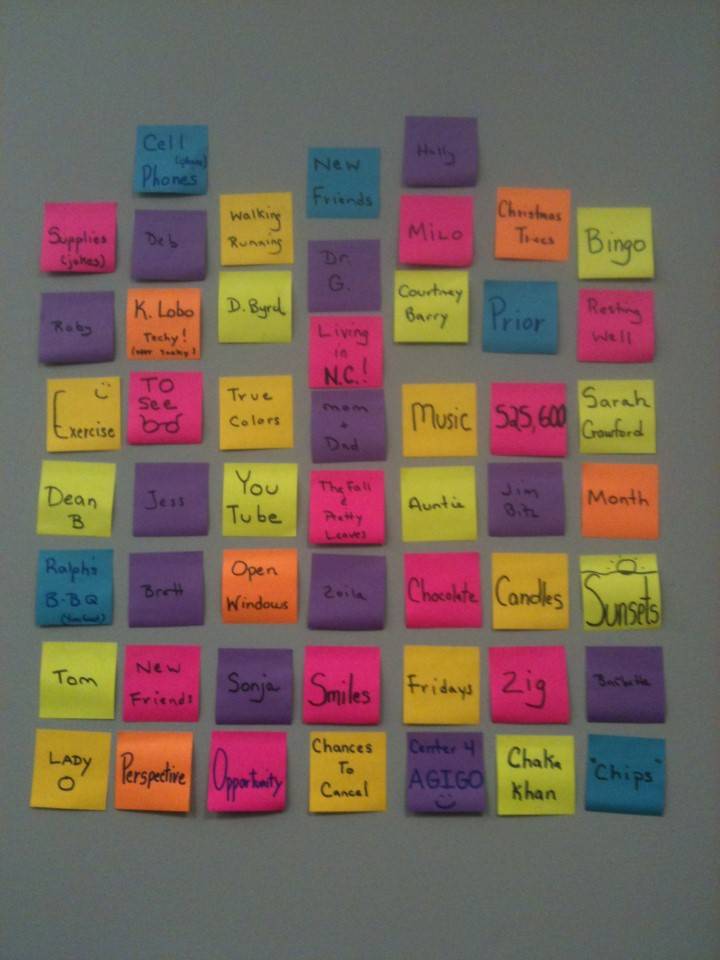One Easy Step Toward Building Resilience
Simply taking a moment to acknowledge good things is an effective way to combat burnout

A tree with a gray plastic trunk and an ever-growing crown of leaves made from green construction paper sprawls across windows in Duke University Hospital’s Cardiothoracic Intensive Care Unit. On each leaf, there’s handwriting.
Some leaves feature short messages from patients and families sharing how well they were treated by the unit’s staff. On other leaves, nurses have written brief compliments about co-workers.
The tree is more than decor for the unit, which houses patients dealing with, among other things, heart surgeries and heart and lung transplants. For staff members who face their share of difficult, stressful days, the “Gratitude Tree” provides a place where members nurture their resilience by surrounding themselves with green paper representations of good things.
“This environment is hectic, so it’s good to have a spot you can go to that’s going to be a positive space,” said clinical nurse Catherine Shuford. “If you’re having a rough day, you can always go there and refocus yourself.”
The conversation around preventing burnout and building resilience is a complicated one, straddling both medical science and workplace dynamics. As a researcher studying burnout and resilience, J. Bryan Sexton, an associate professor in psychiatry and behavioral science at Duke University School of Medicine, knows this well.
But as multi-layered as the problem is - and addressing it is one of the goals of the Healthy Duke campaign - there’s one simple act that he’s seen be consistently helpful. As the “Gratitude Tree” shows, just taking moments to appreciate positive things, no matter how big or small, can help alter your outlook and build resilience.
“Burnout is what happens when it’s difficult to experience hope, when it’s difficult to experience joy and amusement and gratitude and love and awe,” Sexton said. “The way that burnout works is that it gets you more and more focused on the negative stuff and less focused on the positive. One of the ways that you address it is that you let in a little more of the good that is there.”
Training yourself to identify and appreciate moments of happiness can be done several ways.
A method Sexton has used in his research studies is to end each day by writing down three good things that happened that day. Sexton recommends trying this exercise for 15 days.
“What these activities are designed to do is turn that light back on,” Sexton said. “To get you to go ‘Wow!’ or to feel grateful, or to feel hope.”
Another method is to create something akin to the “Gratitude Tree” the nurses constructed in their corner of Duke University Hospital. A communal show of positive messages can help alter the outlook of a workplace.
“It’s been a good way to recognize each other and, when you’re having a rough day, take a few minutes and read through some happy things,” said clinical nurse Heather Pena.
Or you can craft your own method of appreciating good things.
In 2010, an accumulation of stress left David Pittman, senior director of student life with University Center Activities and Events, in need of a positive jolt.
So, he decided to start keeping track of good things that happened to him, or passing moments of happiness, by writing about them on brightly-colored sticky notes and affixing them to a wall in his Bryan Center office.
“I needed a visual,” Pittman said. “I needed a practice that was active, that was hands on.”
He tried to add a few each day. He’d put one up for a good movie he’d seen or a nice lunch he’d had with a co-worker. If he encountered a pretty flower or a pretty smile, he’d write it on a sticky note and post it on the wall.
And as his wall turned into a multi-colored patchwork of positivity, co-workers would come by and add their own contributions.
“On the days when I was feeling down or needed a moment, I would look up and I see an entire wall that was covered in good things,” Pittman said.
After the academic year ended, he took the notes off the wall. He hasn’t put any more back up because, he said, he doesn’t need to. He said maintaining a positive outlook by appreciating the good things around him has become habit.
“What I like about these activities is that you start to feel the benefits right away, they don’t cost anything and the improvements endure,” Sexton said. “It retrains you, it flexes that muscle to help you notice the good things.”
If you're interested in taking part in one of Sexton's studies on the effect of the "three good things" approach, head here for more information.
Got a story idea or news to share? Share your news with Working@Duke.